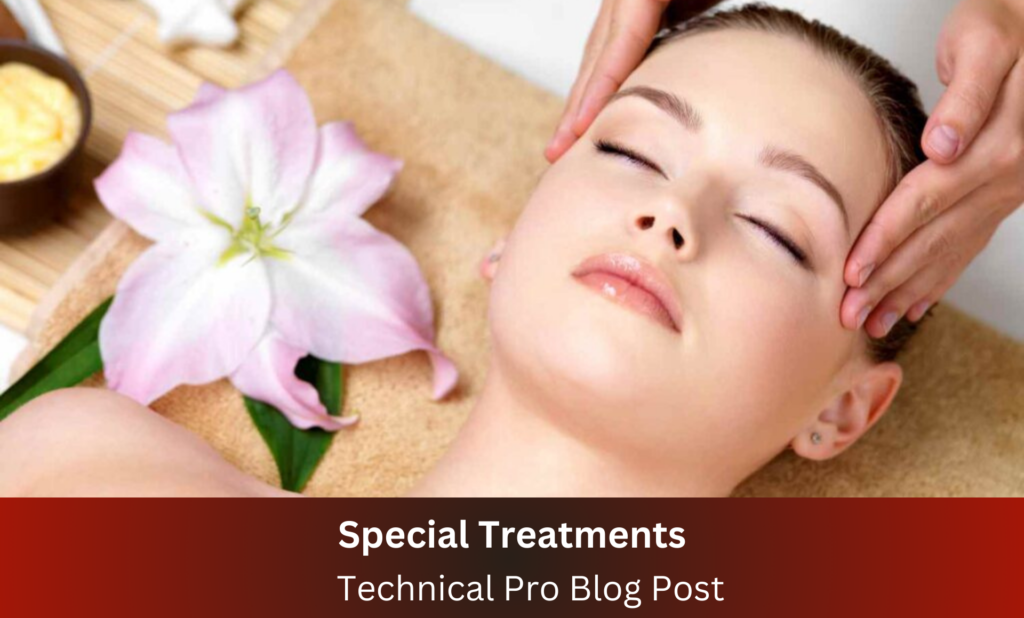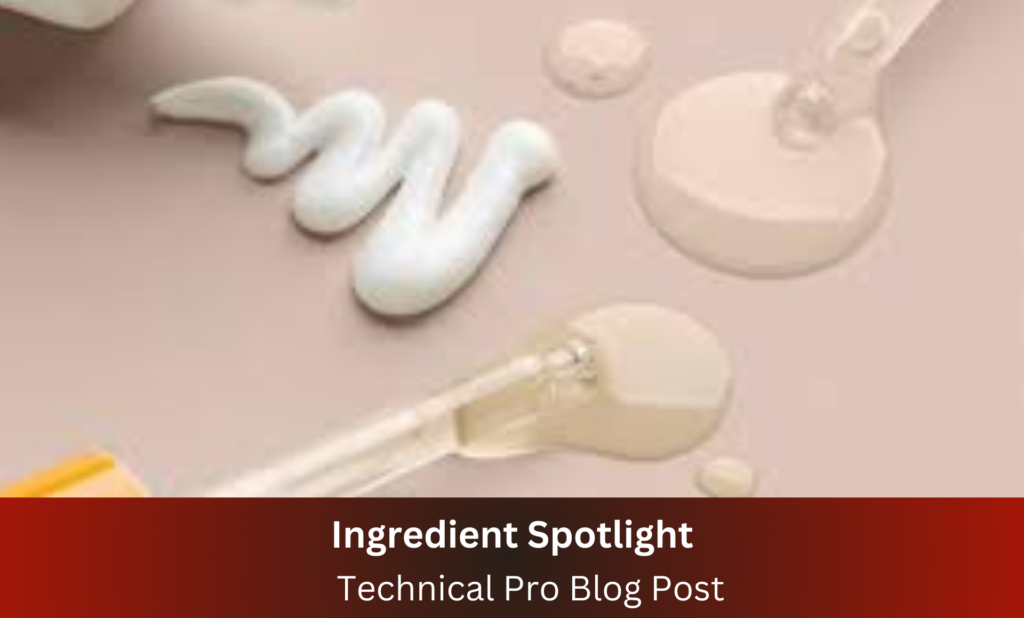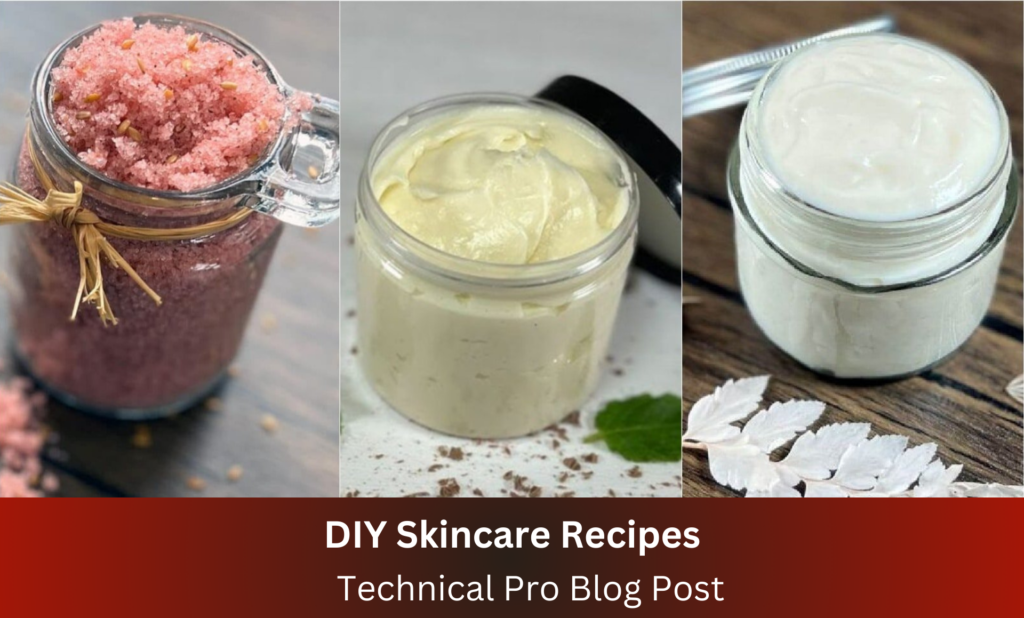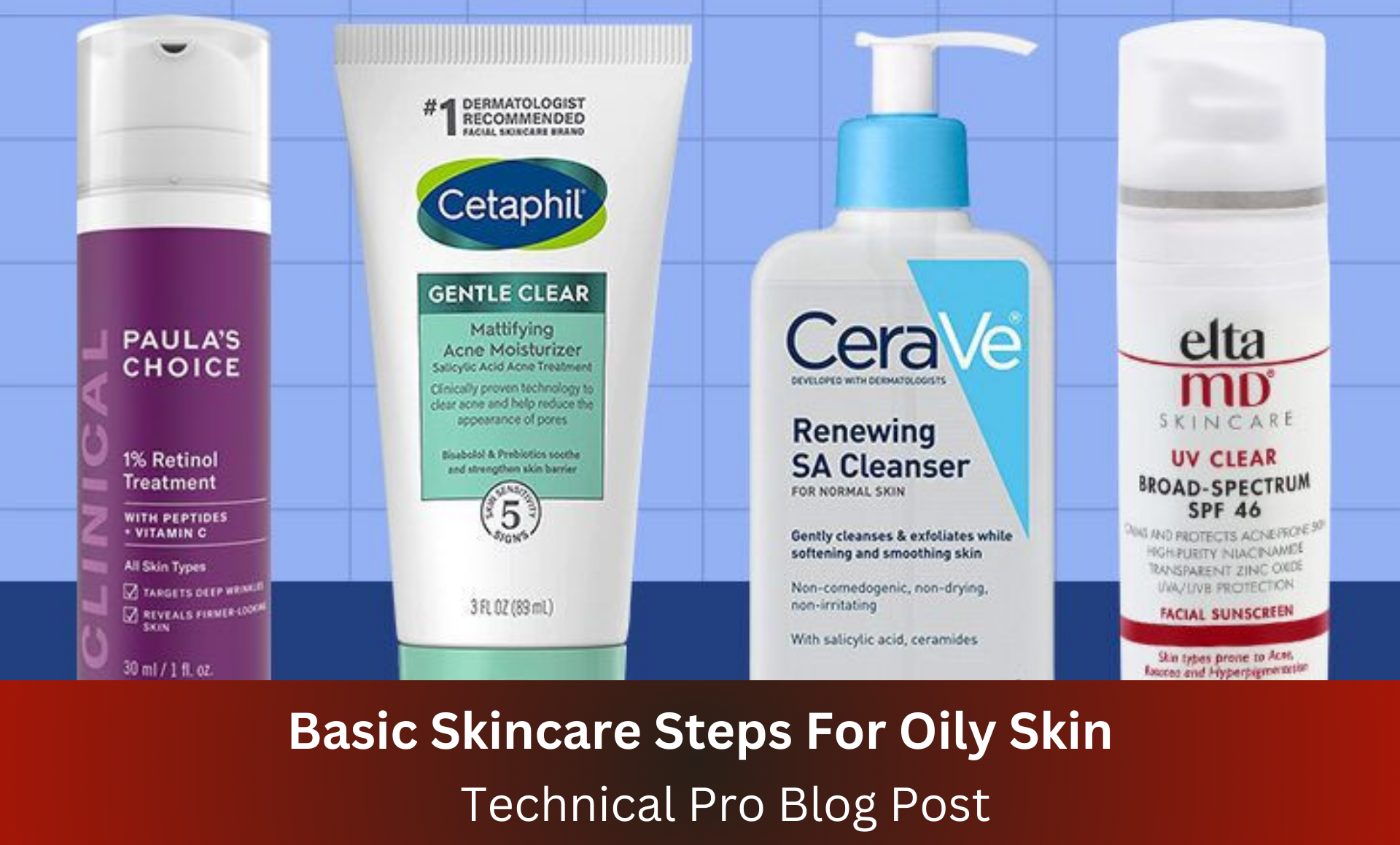Basic Skincare Steps For Oily Skin Taking care of your skin is like tending to a delicate garden; it requires the right knowledge, consistency, and tools. Oily skin, in particular, can be a tricky landscape to navigate. The constant shine, enlarged pores, and frequent breakouts can make skincare feel like an uphill battle. However, with a tailored routine and suitable products, you can manage oily skin effectively. This comprehensive guide will walk you through the essential skincare steps for oily skin, helping you achieve a balanced, healthy complexion.
Understanding Oily Skin
What Causes Oily Skin?
Skincare Steps For Oily Skin is primarily the result of overactive sebaceous glands producing excess sebum. Various factors contribute to this condition, including genetics, hormonal changes, diet, stress, and environmental influences. For a deeper understanding of oily skin causes, check out this detailed article.
Common Characteristics of Skincare Steps For Oily Skin
Oily skin typically appears shiny, particularly in the T-zone (forehead, nose, and chin). It is also prone to enlarged pores and various forms of acne, such as blackheads and whiteheads.
Myths About Skincare Steps For Oily Skin
There are several misconceptions about oily skin. One common myth is that moisturizing will make your skin oilier. In reality, all skin types need hydration. Another myth is that you should wash your face multiple times a day to control oil; however, over-washing can strip your skin of natural oils and trigger increased sebum production.
Essential Skincare Steps
Cleansing
Choosing the Right Cleanser
Selecting the right cleanser is crucial for Skincare Steps For Oily Skin. Opt for a gentle, foaming cleanser that effectively removes excess oil without stripping your skin. Ingredients like salicylic acid and glycolic acid can help control oil and prevent breakouts. Explore recommended cleansers here.
How Often to Cleanse
Cleansing twice a day—once in the morning and once at night—is sufficient. Over-cleansing can irritate your skin and lead to an increase in oil production.
Toning Skincare Steps For Oily Skin
Benefits of Toning
Toners play a key role in removing any residual dirt and oil, tightening pores, and restoring your skin’s pH balance. They help keep oily skin under control and prepare it for the next steps in your skincare routine.
Best Toners for Skincare Steps For Oily Skin
Choose alcohol-free toners with ingredients like witch hazel, tea tree oil, or salicylic acid, which help reduce oil and soothe the skin. Discover top toners.
Moisturizing
Importance of Moisturizing Oily Skin
Moisturizing is essential for all skin types, including oily skin. A good moisturizer helps maintain your skin’s moisture barrier and prevents overproduction of oil.
Recommended Moisturizers
Opt for lightweight, non-comedogenic (won’t clog pores) moisturizers. Gel-based or water-based formulas are ideal for oily skin. Find recommended moisturizers.
Special Treatments For Skincare Steps For Oily Skin

Exfoliating
How to Exfoliate Oily Skin
Exfoliating 1-2 times a week helps remove dead skin cells and prevents clogged pores. Use chemical exfoliants containing ingredients like salicylic acid or AHAs for best results.
Best Exfoliators for Oily Skin
Look for products specifically designed for oily skin, such as BHA (beta hydroxy acid) exfoliants. Check out the best exfoliators.
Face Masks Skincare Steps For Oily Skin
Benefits of Face Masks
Face masks provide deep cleansing, hydration, and targeted treatment for Skincare Steps For Oily Skin issues. They can help absorb excess oil, unclog pores, and soothe the skin.
Top Face Masks for Oily Skin
Clay masks are particularly effective for oily skin, as they absorb excess oil and impurities. Look for masks with ingredients like bentonite clay or charcoal. Explore top face masks.
Daily Skincare Routine
Morning Routine
- Cleanse with a gentle foaming cleanser.
- Apply an alcohol-free toner.
- Use a lightweight moisturizer.
- Apply sunscreen with at least SPF 30 to protect your skin from UV damage.
Evening Routine
- Remove makeup and cleanse your face.
- Apply toner.
- Use a treatment serum (optional).
- Moisturize with a lightweight formula.
Weekly Routine
- Exfoliate once or twice a week to keep pores clear and skin smooth.
- Use a clay mask once a week to absorb excess oil and impurities.
Additional Tips for Managing Oily Skin
Diet and Hydration
What you eat significantly impacts your skin’s health. Incorporate more fruits, vegetables, and lean proteins into your diet, and drink plenty of water to keep your skin hydrated from within.
Lifestyle Changes
Managing stress through activities like yoga, meditation, or regular exercise can help control oil production. Stress can trigger hormonal changes that increase sebum production.
Using Blotting Papers
Blotting papers are a quick and effective way to remove excess oil throughout the day without disturbing your makeup.
Avoiding Common Mistakes
Avoid using harsh products that can strip your skin of its natural oils, leading to increased oil production. Also, resist the urge to pick or squeeze pimples, as this can lead to scarring and infection.
Ingredient Spotlight

Salicylic Acid
Salicylic acid is a beta hydroxy acid (BHA) known for its ability to penetrate oily skin and exfoliate inside the pores. It helps reduce acne by keeping the pores clear of blockages.
Niacinamide
Niacinamide, or vitamin B3, is known for its anti-inflammatory properties and ability to regulate oil production. It also helps reduce the appearance of enlarged pores.
Hyaluronic Acid
Hyaluronic acid is a powerful hydrating ingredient that can hold up to 1000 times its weight in water. It’s great for providing hydration without adding oiliness.
Retinol
Retinol, a derivative of vitamin A, helps increase cell turnover and reduce the appearance of fine lines and wrinkles. It’s also effective in preventing acne breakouts.
Natural Remedies for Skincare Steps For Oily Skin
Benefits and Drawbacks
Natural remedies can be gentle and effective for managing Skincare Steps For Oily Skin. However, they might not be as potent as clinical treatments and can sometimes cause allergic reactions.
Top Natural Ingredients to Try
Witch Hazel: Known for its astringent properties, witch hazel helps tighten pores and reduce oil production.
Aloe Vera: Aloe vera has soothing and anti-inflammatory properties that can help calm irritated skin.
Tea Tree Oil: This essential oil has antimicrobial properties that can help reduce acne-causing bacteria.
Common Mistakes in Skincare for Oily Skin
Over-Cleansing
Cleansing too often can strip your skin of its natural oils, leading to increased oil production. Stick to cleansing twice a day.
Skipping Moisturizer
Even oily skin needs moisture. Skipping moisturizer can cause your skin to produce more oil to compensate for the lack of hydration.
Using the Wrong Products
Using products that are too harsh or not suited for your skin type can exacerbate oiliness and cause breakouts. Always choose products labeled non-comedogenic and oil-free.
Advanced Skincare Tips
Incorporating Serums
Serums are concentrated treatments that can deliver high concentrations of active ingredients. Look for serums with niacinamide, hyaluronic acid, or salicylic acid.
Using Facial Oils
It might seem counterintuitive, but certain oils can help balance oily skin. Jojoba oil and rosehip oil are examples of non-comedogenic oils that can provide moisture without clogging pores.
Anti-Aging Tips for Oily Skin
Use retinol or other vitamin A derivatives to promote cell turnover and prevent signs of aging. Also, always use sunscreen to protect your skin from UV damage.
Recommended Products
Best Cleansers
- CeraVe Foaming Facial Cleanser: Ideal for normal to Skincare Steps For Oily Skin, this cleanser removes excess oil without disrupting the skin’s natural barrier.
- La Roche-Posay Effaclar Purifying Foaming Gel: Suitable for sensitive skin, this gel cleanser gently cleanses and purifies.
Best Toners
- Thayers Alcohol-Free Witch Hazel Toner: This toner is gentle, alcohol-free, and contains aloe vera to soothe the skin.
- Paula’s Choice Pore-Reducing Toner: Contains niacinamide and antioxidants to minimize pores and balance oily skin.
Best Moisturizers
- Neutrogena Hydro Boost Water Gel: A lightweight, water-based moisturizer that provides long-lasting hydration without clogging pores.
- La Roche-Posay Effaclar Mat Moisturizer: A mattifying moisturizer that helps control oil and reduce shine.
Best Exfoliators
- Paula’s Choice Skin Perfecting 2% BHA Liquid Exfoliant: This chemical exfoliant helps unclog pores, smooth wrinkles, and brighten the skin.
- The Ordinary Glycolic Acid 7% Toning Solution: An affordable exfoliating toner that targets dullness and texture.
Best Masks
- Aztec Secret Indian Healing Clay: A powerful deep-pore cleansing mask that draws out impurities and excess oil.
- Origins Clear Improvement Charcoal Honey Mask: Combines the purifying benefits of charcoal with the soothing properties of honey.
DIY Skincare Recipes

Homemade Face Masks
Clay and Apple Cider Vinegar Mask:
- 1 tablespoon of bentonite clay
- 1 tablespoon of apple cider vinegar
Mix together to form a paste and apply to the face. Leave on for 10-15 minutes and rinse off with warm water.
DIY Toners
Green Tea and Witch Hazel Toner:
- 1 cup of brewed green tea
- 1/4 cup of witch hazel
Mix together and store in a clean bottle. Apply with a cotton pad after cleansing.
Natural Exfoliants
Honey and Brown Sugar Scrub:
- 1 tablespoon of honey
- 1 tablespoon of brown sugar
Mix together and gently massage onto the face in circular motions. Rinse off with warm water.
Addressing Acne with Oily Skin
Causes of Acne
Acne in oily skin is often caused by the overproduction of sebum, which can clog pores and lead to breakouts. Bacteria, dead skin cells, and inflammation also play a role.
Best Practices for Acne-Prone Oily Skin
- Use a gentle cleanser with salicylic acid.
- Apply a spot treatment with benzoyl peroxide or tea tree oil.
- Avoid picking or squeezing pimples.
- Incorporate non-comedogenic products into your routine.
Seasonal Skincare Tips
Summer Skincare for Oily Skin
In the summer, oily skin can become even more pronounced. Use a mattifying sunscreen, keep blotting papers handy, and opt for lighter, gel-based moisturizers.
Winter Skincare for Oily Skin
Winter can cause oily skin to become dehydrated. Use a hydrating serum, continue to moisturize, and avoid overly hot showers which can strip your skin of moisture.
Conclusion
Managing oily skin might seem challenging, but with the right routine and products, you can keep your skin balanced and healthy. Remember to cleanse, tone, moisturize, and exfoliate regularly. Embrace your skin type and give it the care it deserves!
For more beauty tips and skincare advice, visit TechBlogPost Beauty.
FAQs
How Often Should I Cleanse My Oily Skin?
Cleanse your oily skin twice a day—once in the morning and once at night.
Can I Skip Moisturizing If I Have Oily Skin?
No, skipping moisturizer can lead to increased oil production. Use a lightweight, non-comedogenic moisturizer instead.
What Ingredients Should I Avoid in Skincare Products?
Avoid products with alcohol, heavy oils, and harsh sulfates as they can irritate oily skin and increase oil production.
Are Natural Remedies Effective for Oily Skin?
Some natural remedies, like witch hazel and aloe vera, can help manage oily skin. However, always patch test new products to ensure they don’t irritate your skin.
How Can I Prevent My Skin from Getting Oily Throughout the Day?
Use blotting papers, a mattifying primer under makeup, and choose oil-free skincare products to help control oil throughout the day.
